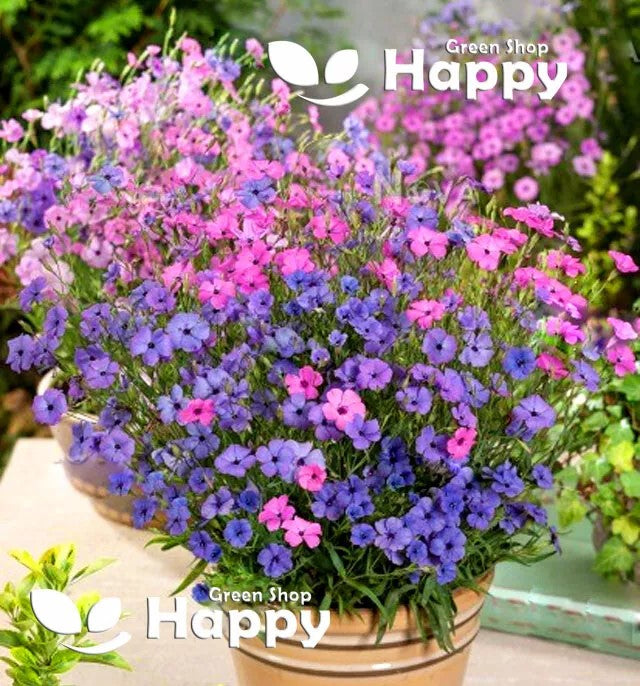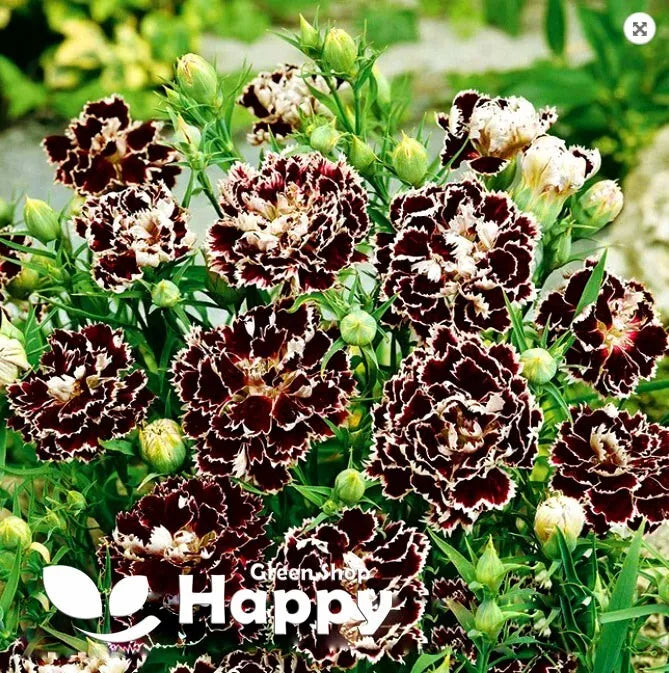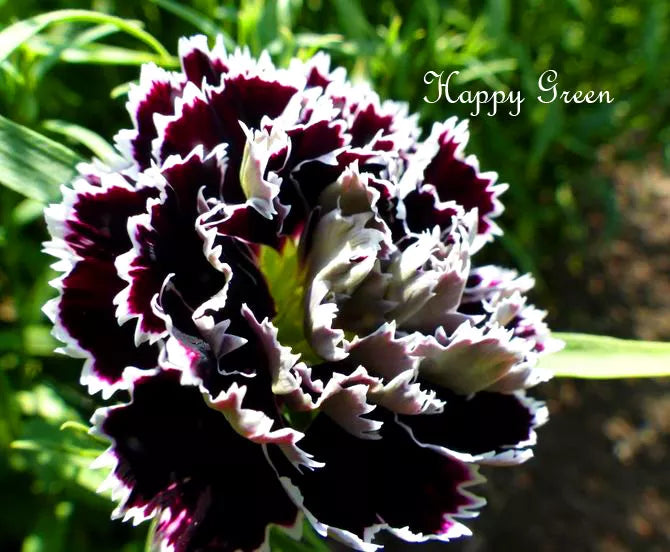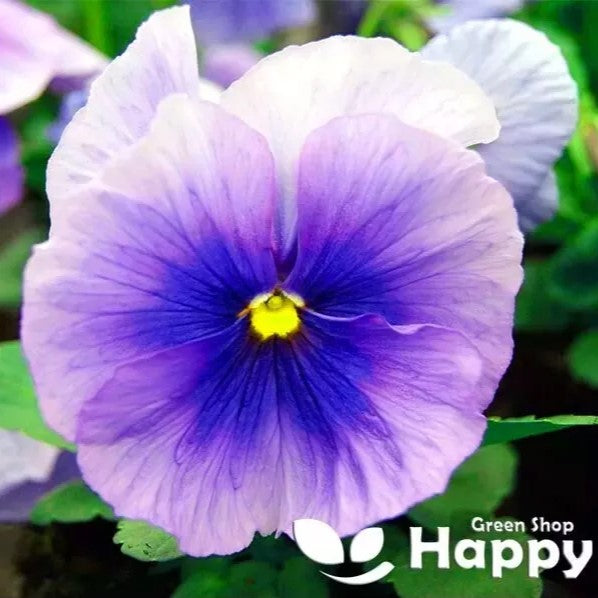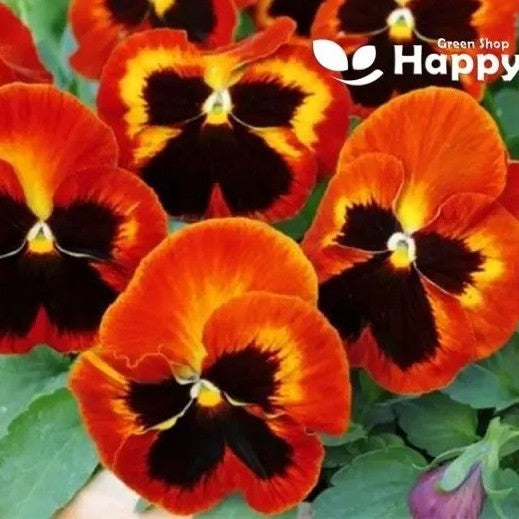Sort by:
48 products
48 products
Silene 'Coeli Rosa' Mix – Seeds (Silene coeli-rosa)
Also known as "Catchfly" or "Rose of Heaven", this charming annual produces a mass of delicate, starry blooms in shades of rose, pink, and white. Compact and free-flowering, it’s an excellent choice for borders, edging, and cottage-style gardens.
Why Grow Silene 'Coeli Rosa' Mix?
-
Abundant, colorful blooms in soft shades
-
Compact and bushy growth habit
-
Easy to grow and low-maintenance
-
Attracts pollinators
Key Features
-
Type: Hardy annual
-
Height: 30–45 cm
-
Flowers: Summer, in rose, pink, and white
-
Position: Full sun, well-drained soil
-
Use: Borders, edging, beds, cottage gardens, containers
Ideal For
-
Adding color to mixed borders
-
Filling gaps with quick summer flowers
-
Cottage and wildflower gardens
-
Pollinator-friendly plantings
Sowing & Growing
-
Sow: March–May directly outdoors
-
Sow depth: Lightly cover seeds, keep soil moist
-
Germination: 10–20 days
-
Thin seedlings to 20 cm apart
-
Flowers: June–September
Tip: Deadhead regularly to encourage longer blooming.
Carnation Black – Seeds (Dianthus heddewigii ‘Chianti’)
Carnation ‘Black Chianti’ is a dramatic annual with deep, velvety maroon to near-black blooms that make a bold statement in beds, borders, and cut arrangements. Its compact habit, long flowering season, and striking color bring elegance and contrast to any garden. Easy to grow and perfect for adding depth to mixed displays.
Why Grow "Black Chianti"
-
Striking near-black, velvety blooms
-
Compact and easy to grow
-
Long flowering season
-
Great for cutting and arrangements
Key Features
-
Type: Hardy annual (Dianthus heddewigii)
-
Height: 30–45 cm
-
Flowering: June–September
-
Position: Full sun, well-drained soil
-
Uses: Borders, containers, cut flowers
Ideal For
-
Bold bedding schemes
-
Patio containers
-
Cottage and modern gardens
-
Dark accents in floral displays
Sowing & Growing
-
Sow indoors: February–April in trays/pots
-
Sow outdoors: April–June in prepared soil
-
Germination: 7–14 days at 18–22°C
-
Transplant or thin to 20–25 cm apart
-
Remove spent blooms to extend flowering
February Orchid – 400 Seeds (Orychophragmus violaceus)
Description:
Brighten early spring gardens with February Orchid (Orychophragmus violaceus). This hardy annual produces clusters of delicate, violet-purple flowers that bloom from late winter into early spring. Its compact, bushy growth habit makes it ideal for borders, rock gardens, and container plantings. February Orchid attracts pollinators and adds cheerful color when few other plants are in bloom.
Key Features
-
Delicate violet-purple blooms from late winter to early spring
-
Hardy, compact, and bushy annual
-
Long-lasting early-season color
-
Attracts bees and pollinators
-
Easy to grow from seed
Ideal For
-
Borders and mixed flower beds
-
Rock gardens and container plantings
-
Early spring color displays
-
Pollinator-friendly gardens
Sowing & Growing
-
Sow Indoors: January–February
-
Sow Outdoors: February–March
-
Germination: 7–14 days at 15–20°C
-
Height: 30–40 cm
-
Spacing: 20–25 cm apart
-
Light: Full sun to partial shade
-
Soil: Well-drained, moderately fertile
Care Tips
-
Water lightly until seedlings establish
-
Deadhead to encourage continuous flowering
-
Avoid waterlogging
-
Can self-seed for future seasons
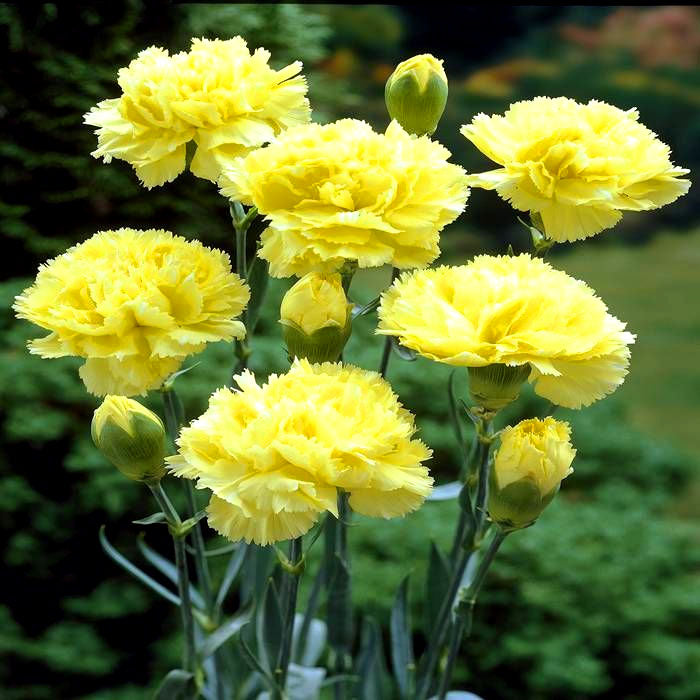
Carnation 'Marie Chabaud' - 350 seeds (Dianthus caryophyllus) Cutting Flower
£1.15
Unit price perCarnation 'Marie Chabaud' - 350 seeds (Dianthus caryophyllus) Cutting Flower
£1.15
Unit price perCarnation ‘Marie Chabaud’ Seeds (Dianthus caryophyllus) – Cutting Flower
Bring classic elegance to your garden with Carnation ‘Marie Chabaud’ (Dianthus caryophyllus). This hardy annual produces large, fragrant blooms in soft pink shades, perfect for cutting gardens, borders, and containers. Long-flowering and easy to grow, it’s ideal for fresh bouquets and floral arrangements.
How to Grow
-
Sow indoors 8–10 weeks before the last frost or directly outdoors after frost risk has passed.
-
Use well-drained, fertile soil in full sun.
-
Lightly cover seeds with soil and keep moist until germination (10–14 days).
-
Transplant seedlings when large enough to handle, spacing 20–25 cm apart.
-
Water regularly and remove spent flowers to encourage continuous blooming.
Key Features
-
Large, fragrant blooms in soft pink shades
-
Long-flowering, ideal for cutting gardens
-
Hardy and easy to grow
-
Perfect for fresh bouquets and floral arrangements
-
Attracts pollinators including bees and butterflies
Ideal For
-
Cutting gardens for fresh flowers
-
Flower beds, borders, and containers
-
Pollinator-friendly gardens
-
Floral arrangements and bouquets
Sowing
-
Best time: 8–10 weeks before last frost indoors or after frost outdoors
-
Germination: 10–14 days
-
Sow thinly, cover lightly, and keep soil moist
-
Prefers full sun and fertile, well-drained soil
Quick Tip
-
Regularly deadhead to prolong flowering and maintain healthy, vibrant blooms throughout the season.

Sweet William Flower Mix "Herald of Spring" - 700 seeds (Dianthus barbatus)
£1.15
Unit price perSweet William Flower Mix "Herald of Spring" - 700 seeds (Dianthus barbatus)
£1.15
Unit price perSweet William Flower Mix ‘Herald of Spring’ Seeds (Dianthus barbatus) – 700 Seeds
Celebrate spring with Sweet William Flower Mix ‘Herald of Spring’ (Dianthus barbatus). This vibrant annual mix produces clusters of fragrant, brightly colored blooms in shades of pink, red, and white. Perfect for borders, cottage gardens, and cutting gardens, it’s easy to grow, long-flowering, and attracts pollinators for a lively garden display.
How to Grow
-
Sow directly outdoors in spring after the last frost or indoors 6–8 weeks earlier.
-
Use well-drained soil in full sun to partial shade.
-
Scatter seeds thinly and cover lightly with soil.
-
Keep soil moist until germination (10–14 days).
-
Thin seedlings to 20–30 cm apart for healthy growth.
-
Deadhead regularly to encourage continuous flowering.
Key Features
-
Clusters of fragrant blooms in pink, red, and white shades
-
Hardy, easy-to-grow annual or biennial depending on climate
-
Long-flowering and attractive to pollinators
-
Ideal for borders, cottage gardens, and cutting gardens
-
Compact growth habit perfect for edging and containers
Ideal For
-
Flower beds, borders, and cottage gardens
-
Cutting gardens for fresh bouquets
-
Pollinator-friendly plantings
-
Containers and patio planters
Sowing
-
Best time: Spring outdoors or 6–8 weeks earlier indoors
-
Germination: 10–14 days
-
Sow thinly, cover lightly, and keep soil moist
-
Prefers full sun and well-drained soil
Quick Tip
-
For a prolonged display, sow successive batches every 2–3 weeks during spring.
Pansy S1 Light Blue Seeds (Viola wittrockiana S1)
Bring serene beauty to your garden with Pansy S1 Light Blue (Viola wittrockiana S1). This charming variety produces large, soft blue blooms with delicate veining, creating a calming and elegant display. Hardy and easy to grow, it’s perfect for borders, containers, window boxes, and early spring planting.
How to Grow
-
Sow indoors 8–10 weeks before the last frost, or directly outdoors in early spring.
-
Use well-drained seed compost and press seeds lightly onto the surface; do not cover.
-
Keep soil moist and in bright light until germination (10–14 days).
-
Transplant seedlings 20–25 cm apart into well-drained soil once large enough to handle.
-
Water regularly but avoid waterlogging.
-
Deadhead spent blooms to prolong flowering.
Key Features
-
Large, soft light blue flowers with delicate veining
-
Hardy and easy-to-grow variety
-
Long-flowering from spring to early summer
-
Ideal for borders, containers, and window boxes
-
Attracts bees and other pollinators
Ideal For
-
Flower beds and borders
-
Containers and patio planters
-
Window boxes and hanging baskets
-
Pollinator-friendly gardens
Sowing
-
Best time: 8–10 weeks before last frost indoors, or early spring outdoors
-
Germination: 10–14 days
-
Sow thinly, keep soil moist, do not cover seeds
-
Prefers full sun to partial shade and well-drained soil
Quick Tip
-
Remove spent flowers regularly to encourage new blooms and maintain vibrant color throughout the season.
Pansy Swiss ‘Giant Flame’ Seeds (Viola wittrockiana)
Bring fiery color to your garden with Pansy Swiss ‘Giant Flame’ (Viola wittrockiana). This striking variety produces large, vibrant blooms in shades of red, orange, and yellow, creating a dramatic, eye-catching display. Hardy and easy to grow, it’s perfect for borders, containers, and window boxes, adding warmth and cheer from spring to early summer.
How to Grow
-
Sow indoors 8–10 weeks before the last frost, or directly outdoors in early spring.
-
Use well-drained seed compost and lightly press seeds onto the surface (do not cover).
-
Keep soil moist and maintain bright light for germination (10–14 days).
-
Transplant seedlings into well-drained soil with spacing of 20–25 cm apart.
-
Water regularly but avoid waterlogging.
-
Deadhead spent blooms to prolong flowering.
Key Features
-
Large, vibrant blooms in fiery red, orange, and yellow shades
-
Hardy annual/perennial in cooler climates
-
Long-flowering from spring to early summer
-
Ideal for borders, containers, and window boxes
-
Attracts pollinators such as bees and butterflies
Ideal For
-
Flower beds and borders
-
Containers and patio planters
-
Window boxes and hanging baskets
-
Pollinator-friendly garden designs
Sowing
-
Best time: 8–10 weeks before last frost indoors, or early spring outdoors
-
Germination: 10–14 days
-
Sow thinly, keep soil moist, do not cover seeds
-
Prefers full sun to partial shade and well-drained soil
Quick Tip
-
Remove spent flowers regularly to encourage new blooms and maintain vibrant color throughout the season.
Sweet William ‘Pinocchio’ Mix – Seeds
(Dianthus barbatus) – Biennial/Short-lived Perennial
The Sweet William ‘Pinocchio’ Mix is a compact variety that produces charming clusters of vividly colored flowers in shades of red, pink, white, and bicolor. Its fragrant, long-lasting blooms make it a favorite for borders, rock gardens, and cut flowers. Compact in habit, it’s perfect for smaller spaces and containers while still bringing cottage-garden charm.
Key Features
-
Type: Biennial / short-lived perennial
-
Height: 25–30 cm
-
Blooming period: May–July (from second year)
-
Position: Full sun to partial shade
-
Soil: Well-drained, fertile soil
Ideal For
-
Borders and edging
-
Rock and cottage gardens
-
Containers and small gardens
-
Long-lasting cut flowers
Sowing & Growing
-
Sow indoors: February–April at 18–20°C
-
Sow outdoors: May–June for flowering the following year
-
Sowing depth: Surface sow, lightly cover with fine soil
-
Spacing: 15–20 cm apart
-
Care: Deadhead regularly; mulch in winter for protection
Statice ‘Petit Bouquet’ Mix – Seeds
(Limonium sinuatum) – Annual Cut Flower
The Statice ‘Petit Bouquet’ mix produces compact plants covered in clusters of papery flowers in shades of blue, pink, yellow, white, and lavender. Known for their exceptional vase life, these blooms remain vibrant whether fresh or dried, making them a favorite for bouquets and floral crafts.
Key Features
-
Type: Annual
-
Height: 30–45 cm
-
Blooming period: June–September
-
Position: Full sun
-
Soil: Well-drained, sandy or loamy soil
Ideal For
-
Fresh and dried flower arrangements
-
Borders and cottage gardens
-
Cutting gardens
-
Long-lasting floral crafts
Sowing & Growing
-
Sow indoors: March–April, in trays or pots at 18–22°C
-
Sow outdoors: May, after last frost
-
Sowing depth: 0.5 cm
-
Spacing: 25–30 cm apart
-
Care: Prefers sunny, sheltered spots; drought-tolerant once established
Showing 9/48

